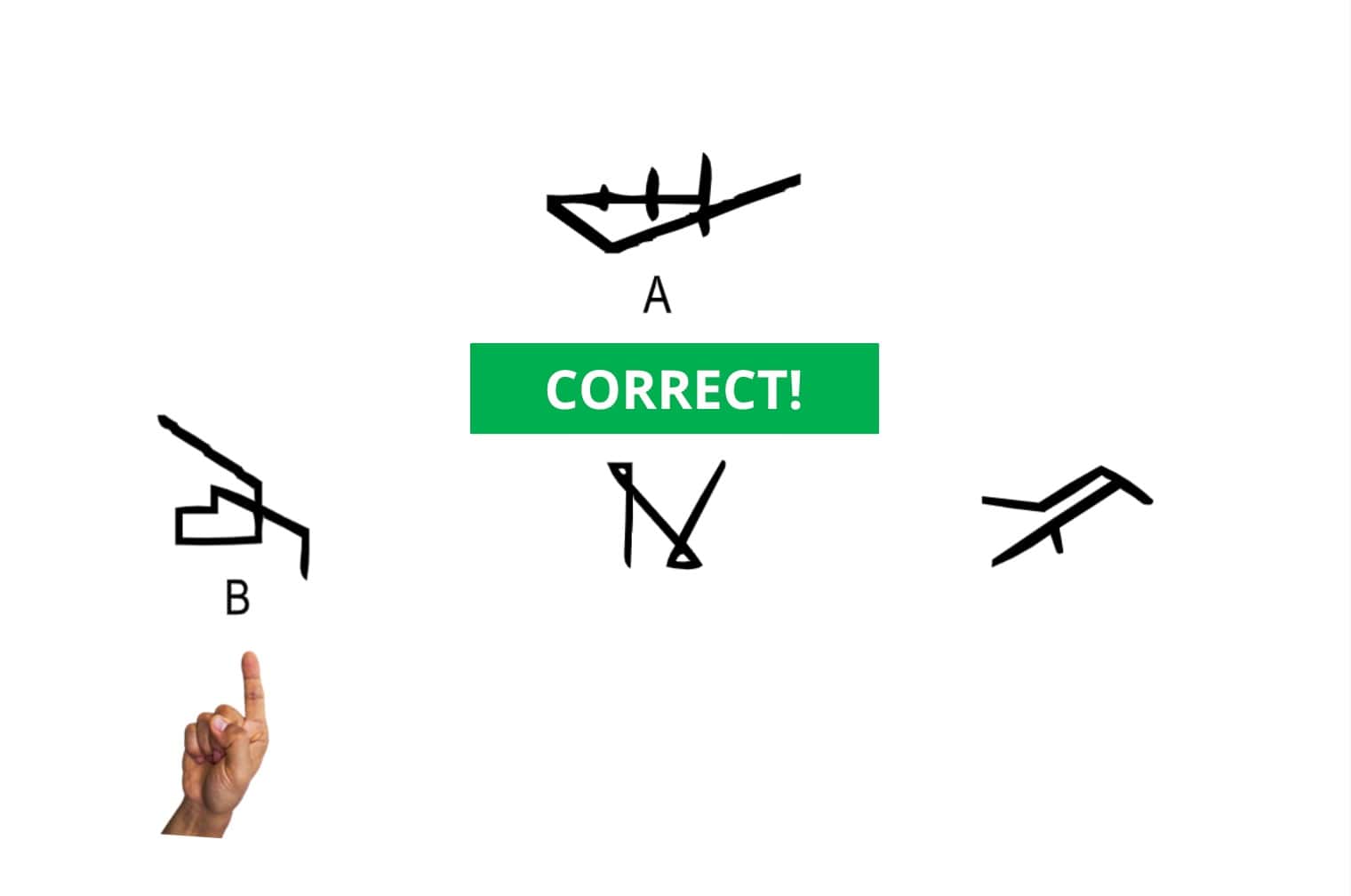4.7 Stimulus Equivalence Example Part 1
Let’s look at a phenomenon known as stimulus equivalence. Stimulus equivalence involves deriving relations of sameness or equivalence and is often studied in the laboratory with arbitrary symbols like these1. First, a person learns to match one arbitrary visual stimulus (A) to another (B). The stimuli are not actually labeled A and B in the experiment, silly. Whenever stimulus A is presented at the top, picking stimulus B is reinforced.
- Barnes-Holmes, D., Barnes-Holmes, Y., and Smeets, P. M. (2004). Relational frame theory and stimulus equivalence: Conceptual and procedural issues. International Journal of Psychology and Psychological Therapy, 4(2), 181-214.


Silly?
I don’t see the match between A & B.